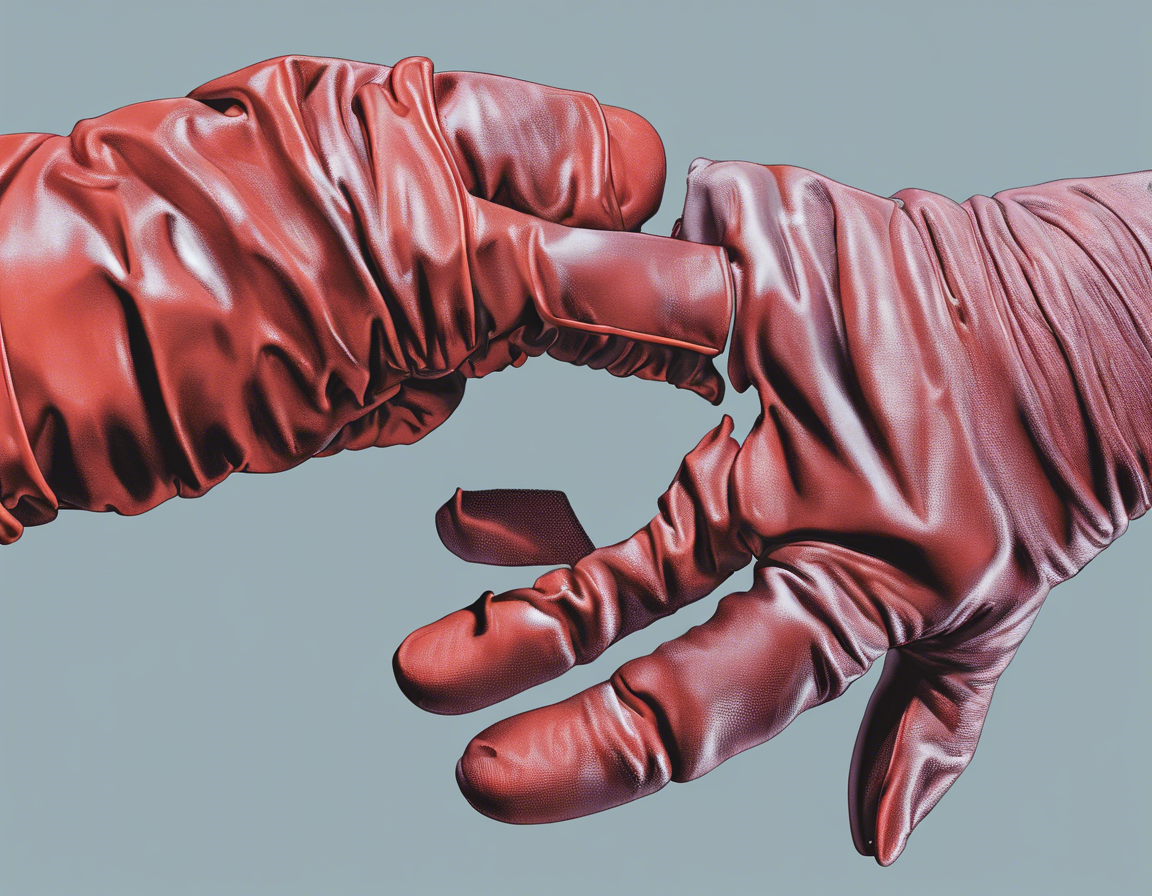Introduction
The hand is a remarkable part of the human body. Its intricate structure and dexterity allow us to perform a multitude of tasks, both simple and complex. However, the hand is not impervious to injuries or strains. One common issue that many individuals face, especially those who engage in repetitive hand movements, is the glove strain. This ailment can be uncomfortable and affect one’s ability to perform daily activities. In this comprehensive guide, we will explore what glove strain is, its causes, symptoms, treatment options, and preventive measures to keep your hands healthy and functional.
Understanding Glove Strain
Glove strain, also known as hand strain, is a condition that occurs when the muscles, tendons, or ligaments in the hand become overused, leading to pain, discomfort, and reduced mobility. This strain can affect individuals of all ages and is often seen in those who perform repetitive motions with their hands, such as typing on a keyboard, playing musical instruments, or engaging in sports like golf or tennis.
Causes of Glove Strain
There are several factors that can contribute to the development of glove strain. Some of the common causes include:
1. Repetitive Movements: Continuously performing the same hand movements can put stress on the muscles and tendons, leading to strain over time.
2. Poor Ergonomics: Using improper hand positioning or equipment that is not suited to your hand size and shape can increase the risk of developing glove strain.
3. Lack of Rest: Failing to give your hands adequate rest between activities can prevent proper recovery and increase the likelihood of strain.
4. Trauma or Injury: A sudden impact or injury to the hand can also result in glove strain, especially if not properly treated or rehabilitated.
Symptoms of Glove Strain
Recognizing the symptoms of glove strain is crucial for early intervention and treatment. Some common signs of glove strain include:
1. Pain or Discomfort: Persistent pain in the hands or fingers, especially during or after activities, can indicate glove strain.
2. Stiffness or Reduced Range of Motion: Difficulty moving the hands or fingers fully can be a sign of strain in the muscles or tendons.
3. Swelling or Tenderness: Inflammation and tenderness in the hand or fingers may be indicative of strain or overuse.
4. Weakness: Reduced strength or grip in the hands can be a symptom of underlying muscle or tendon strain.
Treatment Options for Glove Strain
If you are experiencing symptoms of glove strain, there are several treatment options available to help alleviate pain and promote healing. Some effective strategies include:
1. Rest and Immobilization: Giving your hands adequate rest and avoiding activities that aggravate the strain can help promote healing. Splinting or immobilizing the hand may also be necessary in severe cases.
2. Ice and Heat Therapy: Applying ice packs to reduce inflammation and heat packs to improve blood flow can help alleviate pain and stiffness in the hands.
3. Physical Therapy: Engaging in specific exercises and stretches to improve hand strength and flexibility can be beneficial in treating glove strain.
4. Pain Medication: Over-the-counter pain relievers like ibuprofen or acetaminophen can help manage pain and discomfort associated with glove strain.
5. Ergonomic Adjustments: Making changes to your workspace or equipment to improve hand positioning and reduce strain on the muscles and tendons.
Preventive Measures for Avoiding Glove Strain
While treating glove strain is important, taking proactive steps to prevent it from occurring in the first place is even better. Here are some preventive measures you can implement to keep your hands healthy and free from strain:
1. Proper Ergonomics: Maintain good hand posture and use ergonomic tools and equipment that support natural hand movements.
2. Take Breaks: Regularly take breaks during activities that involve repetitive hand motions to give your hands time to rest and recover.
3. Stretching and Strengthening Exercises: Incorporate hand and finger exercises into your routine to improve flexibility and strength in the muscles and tendons.
4. Stay Hydrated: Adequate hydration is essential for maintaining soft tissues and reducing the risk of cramping or stiffness in the hands.
5. Warm-Up Before Activities: Engage in gentle stretching or warm-up exercises before starting any activities that require repetitive hand movements.
FAQs (Frequently Asked Questions)
Q1: Can glove strain affect individuals of all ages?
A: Yes, glove strain can occur in individuals of all ages, especially those who engage in repetitive hand movements or activities.
Q2: How long does it take to recover from glove strain?
A: The recovery time for glove strain varies depending on the severity of the strain and adherence to treatment. Mild cases may resolve within a few days to weeks, while severe cases may take longer.
Q3: Are there specific exercises to prevent glove strain?
A: Yes, there are hand and finger exercises that can help strengthen muscles and improve flexibility, reducing the risk of glove strain.
Q4: Can ergonomic tools help prevent glove strain?
A: Yes, using ergonomic tools and equipment that support natural hand movements and reduce strain can help prevent glove strain.
Q5: When should I seek medical attention for glove strain?
A: If you experience persistent or worsening symptoms of glove strain despite home remedies, it is advisable to consult a healthcare professional for further evaluation and treatment.
Conclusion
Glove strain is a common condition that can affect individuals who perform repetitive hand movements or activities. Recognizing the symptoms, seeking early treatment, and implementing preventive measures are essential in managing and avoiding glove strain. By following the guidelines outlined in this comprehensive guide, you can keep your hands healthy, functional, and free from strain. Remember to listen to your body, practice good hand ergonomics, and prioritize hand health in your daily routines.

